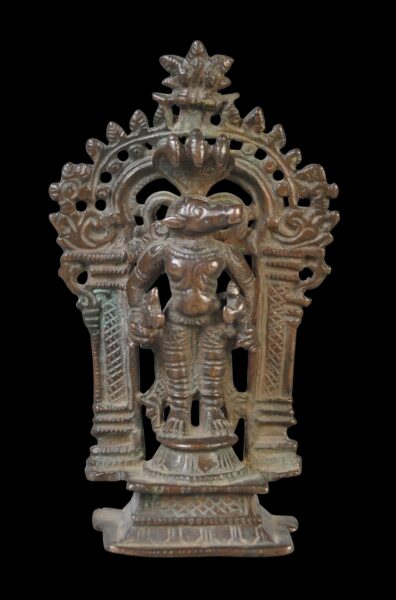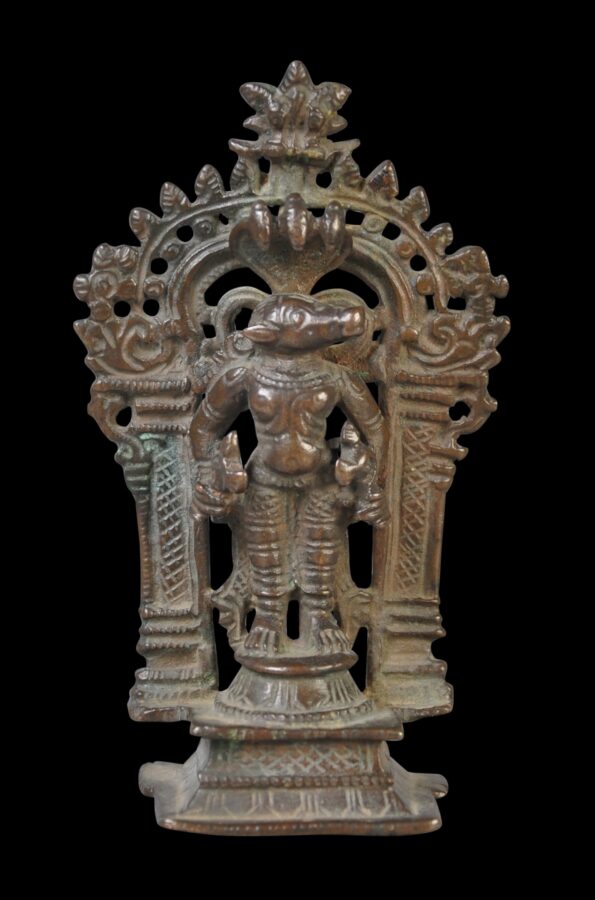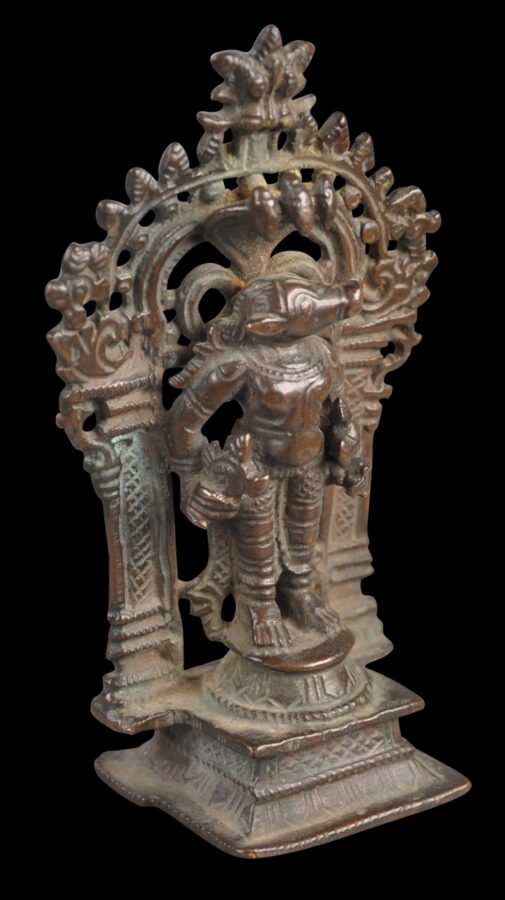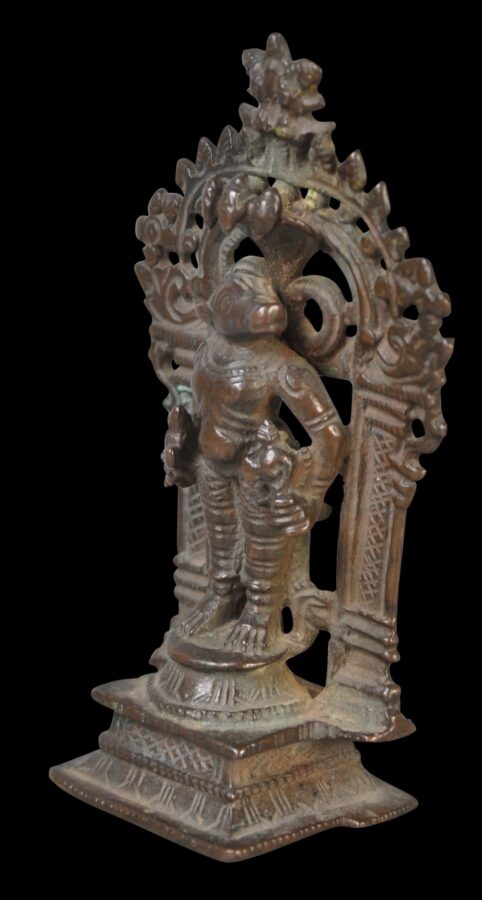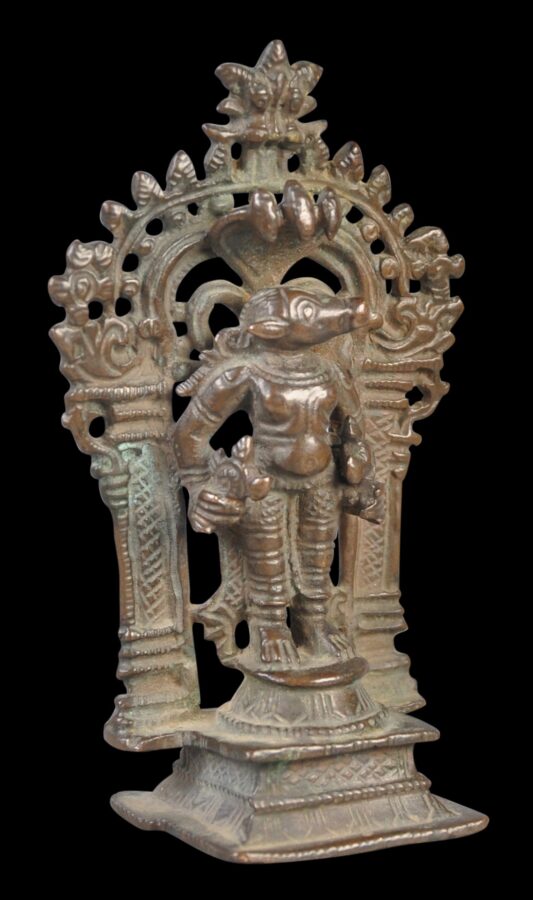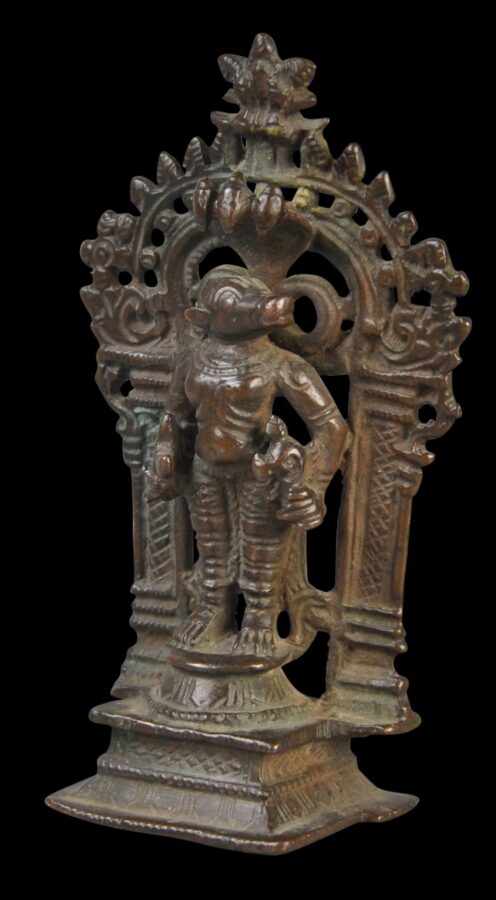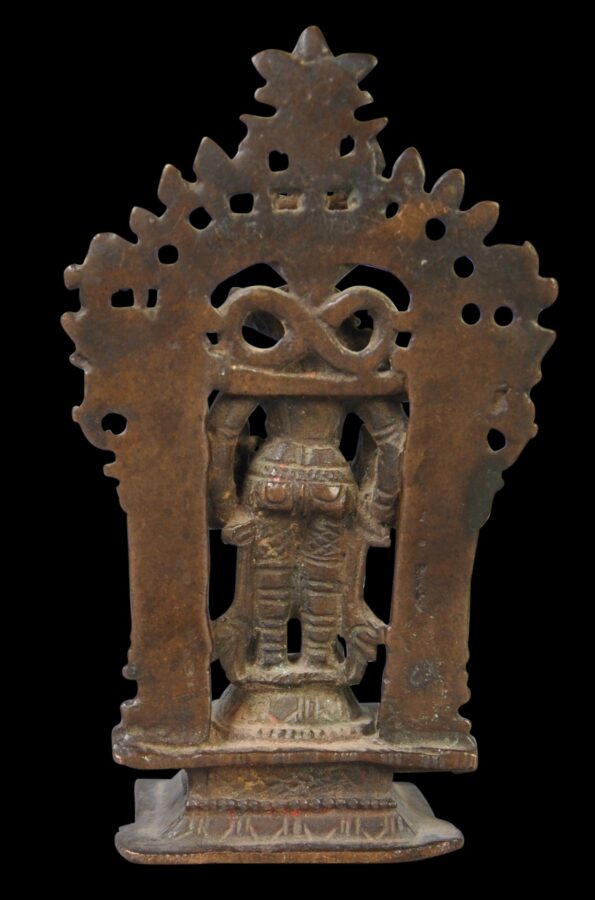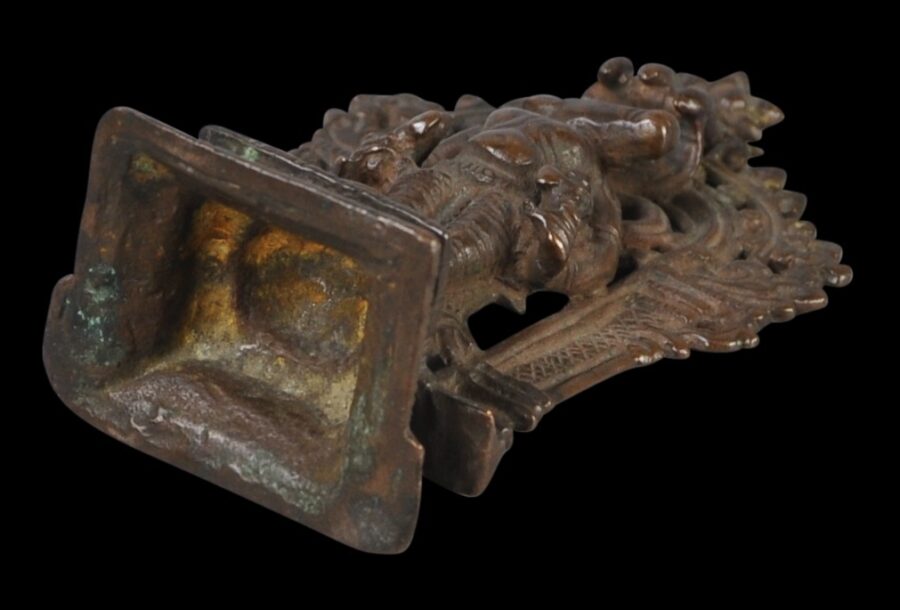This small cast bronze image of Varaha, the boar-headed avatar of Vishnu, was made for personal devotion on a private altar. The deity stands on a lotus pedestal atop a tiered, rectangular base. An elaborate aureole is fixed to the stand behind Varaha. A multi-headed, hooded cobra rears from the aureole to provide a protective canopy of Varaha’s head. The aureole is surmounted by a kurtimukha mask which offers further protection to the deity.
Varaha has two hands each of which holds an attribute – a flaming cakra wheel in one, and a conch (shanka) in the other. He wears a striped dhoti from his waist, and various items of jewellery on his arms and chest.
There are various stories of how Vahara came to exist and what the avatar’s purpose was. The most usual is that Vishnu assumed the form of an enormous boar to rescue the earth from the ocean, by diving into the ocean to retrieve the earth and then by subsequently killing the kidnapper-demon Hiranyaksha. The choice of a boar might seem odd but in fact, boars were seen in India as fast, strong and brave.
Vishnu’s other avatars are:
Matsya, the fish-avatar who saved Manu, the creator of mankind, from the great deluge and rescued the Vedic scriptures by killing a demon.
Kurma, the tortoise avatar, who helped the other gods during the Samudra Manthan or the churning of the ocean of milk.
Varaha, the boar avatar, who rescued the earth from the ocean, by killing the kidnapper-demon Hiranyaksha.
Narasimha, the half man-half lion avatar, who killed the tyrant demon-king Hiranyakashipu, to rescue the demon’s son Prahlada, who was a Vishnu devotee.
Vamana, the dwarf avatar, who defeated the demon-king Bali.
Parashurama, axe-wielding sage who killed the thousand-armed King Kartavirya Arjuna.
Rama, the king of Ayodhya and the hero of the Hindu epic Ramayana.
Krishna, the king of Dwarka, an important character in the Bhagavata Purana and the Mahabharata and a reciter of Bhagavad Gita.
Gautama Buddha, although it might also be Balarama, the elder brother of Krishna. Balarama is sometimes considered a Dasavatar, in place of the Buddha.
Kalki, the destroyer of darkness, who is expected to appear at the end of the Kali Yuga.
The bronze here is in excellent condition and has a dark brown patina and contours softened from ritual handling. This is a fine, unusual piece.
References
Cummins, J. (ed.), Vishnu: Hinduism’s Blue-Skinned Savior, First Center for the Visual Arts/Mapin Publishing, 2011.
Guy, J., Indian Temple Sculpture, V&A Publications, 2007.
Pal, P., Indian Sculpture, Volume 2 – 700-1800, Los Angeles County Museum of Art, 1988.


